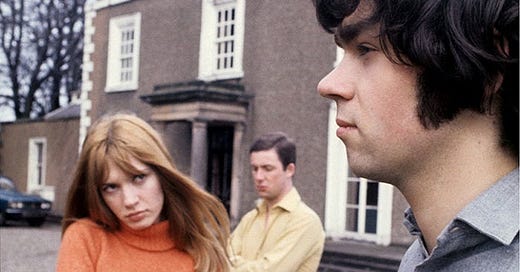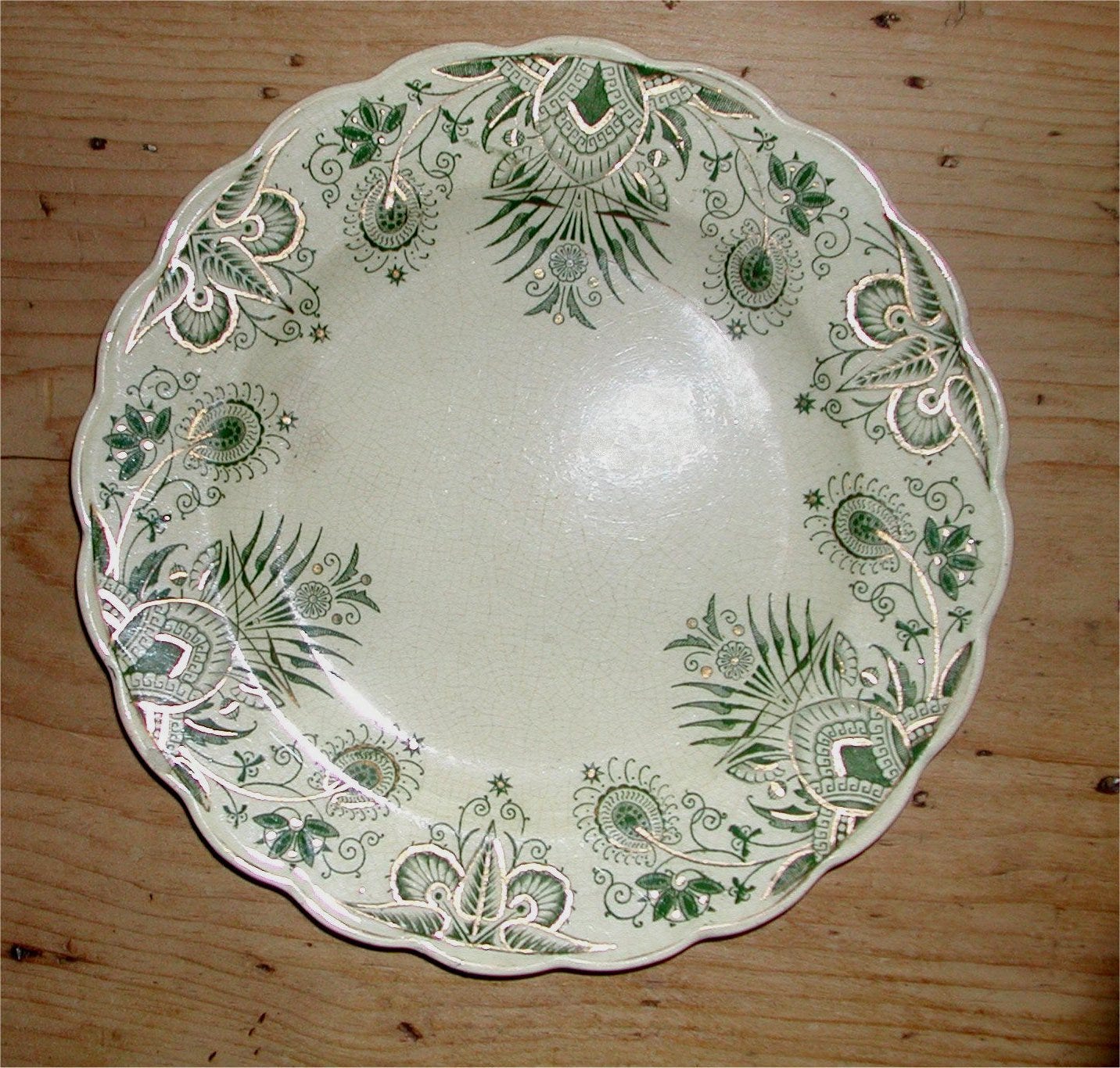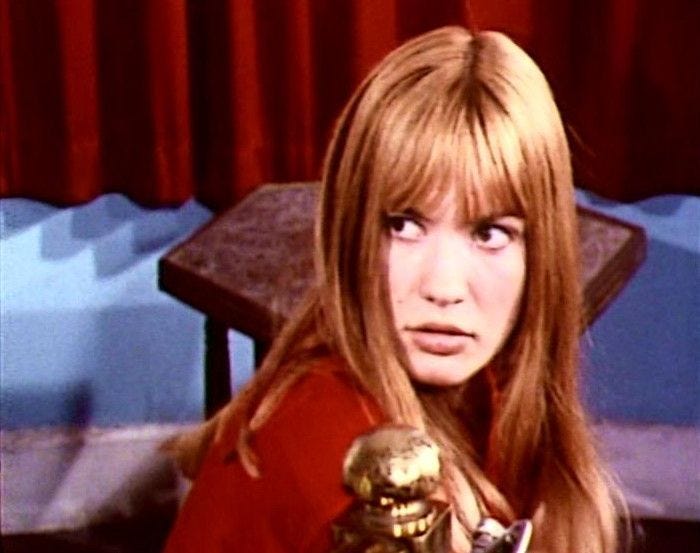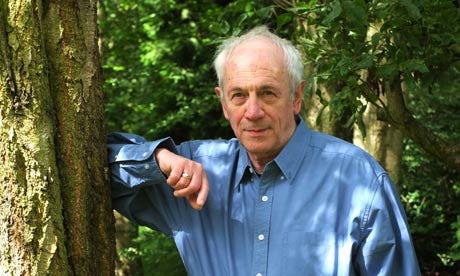Teatime TV Folk-Horror For All The Family
Alan Garner's masterpiece in print and on screen - "The Owl Service"
“The past never truly leaves us; it lingers in the shadows, waiting to be awakened.”
The hypnotic opening credits last just 40 seconds.
A rural idyll. Pastoral music. Mood broken sharply by a visual of a telescopic (rifle?) lens and the vicious growl of a speeding motorbike.
The pastoral tune returns briefly. A candle flickers.
The motorbike revs once again and unseen hands make a shadow puppet of a bird, wings flapping, which resolves itself into another hole.
Ending on a dinner plate with an unusual pattern which looks like flowers and owls at the same time.
The Owl Service doesn’t mess around with introductions and exposition. It just jumps straight into the narrative, demanding and expecting that we follow it.
Roger and his recently divorced father Clive are spending the summer in an old, isolated manor house in North Wales, along with Clive’s new wife Margaret and her daughter Alison.
All are adjusting to the new family dynamic, which is complicated by the presence of Gwyn, the son of their housekeeper Nancy.
The three teenagers get along well initially. Alison hears an odd scratching noise coming from the sealed-up attic above her room. She calls to Gwyn, who breaks the seal, goes up to the attic to find a collection of old dinner plates with a distinctive pattern incorporating flowers and owls.
Alison quickly develops an obsession with the plates, tracing the design and making paper owls, perhaps under an outside influence. Crucially, though, there is no regulation scene-setting where we see the three acting “normally” - Alison seems to spend most of her time alone in her room. So there is a sense that she may be like this all the time.
It quickly becomes apparent that the three teenagers are unknowingly replaying a love triangle with supernatural overtones, in a sequence of events that unravels as the story progresses.
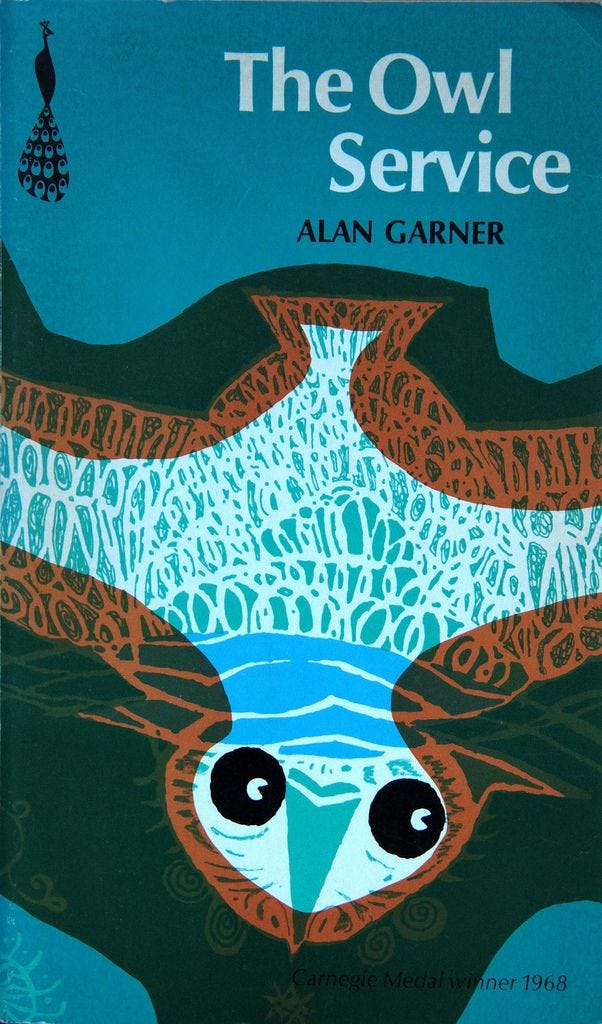
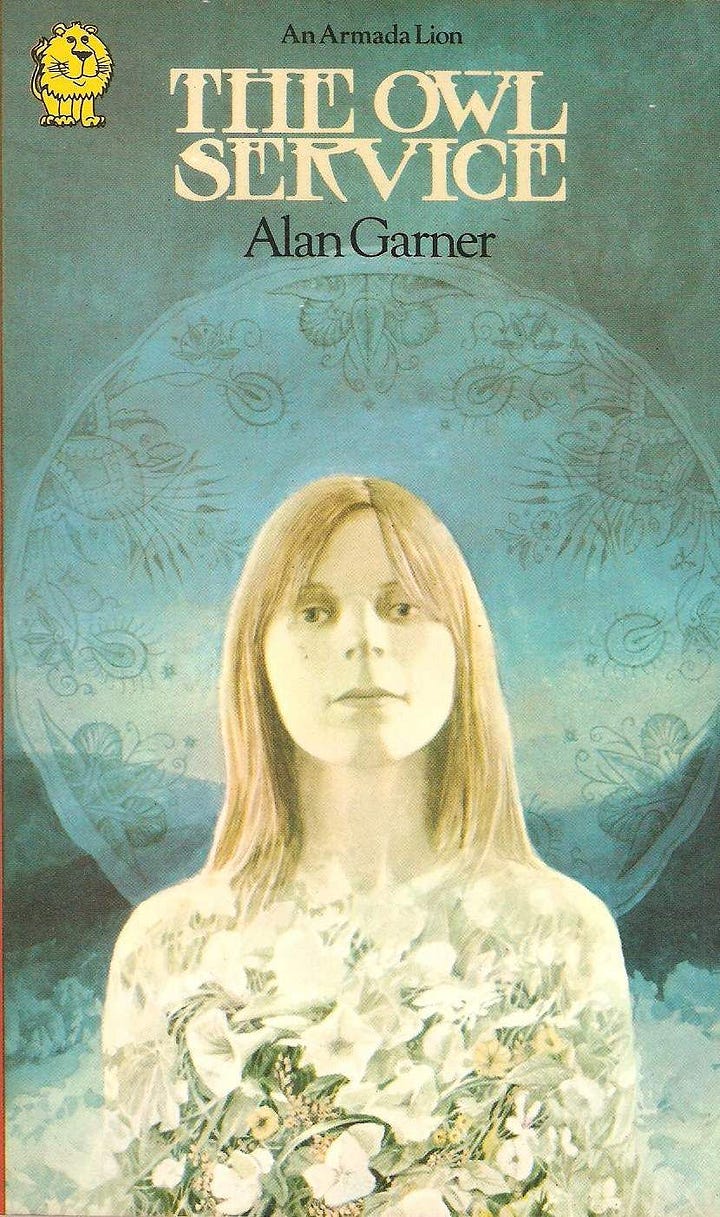
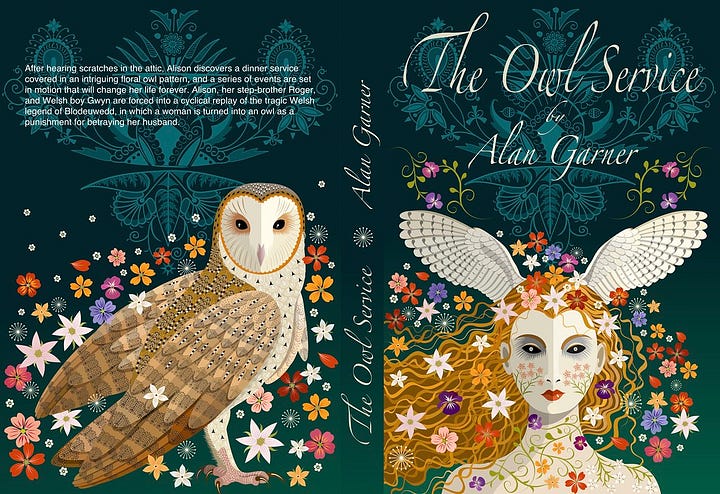
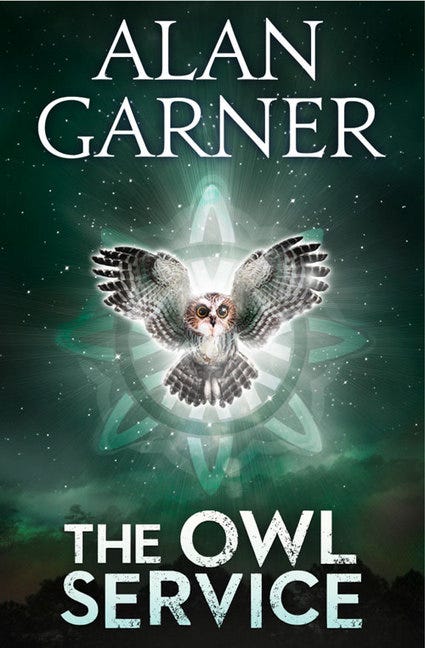
Four different covers for the book, ranging from the sixties to the nineties.
Alan Garner’s classic and well-loved children’s fantasy novels were published between 1960 and 1974.
I will save The Weirdstone Of Brisingamen and its sequel The Moon Of Gomrath, and also Elidor and Red Shift, for future articles.
The Owl Service was written in 1967, the first of his published works to be set away from his “home country” of the North-West of England.
North Wales is the setting for a modern take on an ancient Welsh myth, committed to written form in the thirteenth century in the Fourth Branch of the Mabinogion.
It concerns Blodeuwedd, a woman created from flowers who is turned into an owl as a punishment for infidelity, and almost incidentally for persuading her lover Gronw to kill her husband Lleu.
Now this falls firmly into the category of “You could never make this for kids today!”
To be fair you couldn’t have explicitly published or broadcast that concept in the late sixties either.
Alan Garner’s detailed, layered plotting (he also wrote the screenplay) means events and desires are not spelt out explicitly but rather left to the reader/viewer to tease out, without the story being sanitised in any way - and this for me is where the true genius of his work lies.
There are hints - just hints, mind - of Dennis Potter’s later 1979 play Blue Remembered Hills in which adults play primary-school age children.
The Owl Service, however, takes a much less obvious path with its 20-something cast playing teenagers, one stroppy, one sullen and one dreamer.
We are fully aware of the jealousies lurking just under the surface. Alison and Roger are not blood-siblings. They are middle-class English while Gwyn is working-class Welsh. Alison seems to like Gwyn. Roger is not happy about this.
There are definite echoes in Gwyn’s character of Huw Morgan, the main character in Richard Llewellyn’s novel How Green Was My Valley, set in a Welsh mining village at the turn of the (19th to 20th) century. Huw is brash and intelligent enough to contemplate a life away from the mines, and from his community.
The idea of repeating history and prediction is tied in with the Welsh / English friction that develops throughout the book.
Alan Garner was inspired by the Victorian-era dinner plates owned by his mother-in-law which featured a floral design that, looked at the right way, could also be interpreted as a ring of owls' heads.
Questions remain at the end of the tale, which lives in the mind and the imagination long after you’ve watched it.
Why do we never see or hear Alison’s mother? Perhaps something to do with Blodeuwedd not having a mother in the story, as she was created out of flowers.
Was it the discovery of the plates, or the coming together of the three in that specific location that initiated subsequent events?
Or do they somehow draw the legend towards them?
Gillian Hills as Alison - perfect casting
Gillian Hills on The Owl Service
“I never thought The Owl Service was for children only. It felt as if it fit a larger audience. That’s what made it special. Because it also belongs somewhere where the memory of one’s own adolescence lies…
…Any criticism that the series was unsuitably adult for children is untrue. Never underestimate the child; it is pure, it observes, makes up its own mind. But then is taught to see things otherwise. It is the adult with its crooked mind that is the trouble…
…It is a good sign for a piece of work to be labelled ‘deeply disturbing’. This means ‘here is something unusual.’ ” - Gillian Hills.
At the centre of the triangle is Alison, played by English actress Gillian Hills.
A child starlet discovered by Roger Vadim in the late fifties (between Brigitte Bardot and Jane Fonda), Hills appeared with Adam Faith in the British film Beat Girl, before moving into the music business and finding success as a singer in the French Ye-Ye style, working with Serge Gainsbourg.
She is best known in the modern era for featuring on the soundtracks of Mad Men with Zou Bisou Bizou and The Queen’s Gambit with Tut Tut Tut Tut. She wrote many of her own hits, too.
When her singing career drew to a close she returned to acting and appeared Blow-Up and later A Clockwork Orange.
Unconsciously mimicking Alison’s obsession in The Owl Service with making paper birds, Hills retired from acting and became an illustrator.
Her central performance in The Owl Service made a deep impression on everyone who saw it on first broadcast, especially as a child.
A word from the Creator
As with all Alan Garner’s work, not a word is wasted. I’ll let the man have the last word in this article, then.
In 2012, The Guardian persuaded him to do one of their Readers’ Q and As and he was asked this question.
“I find it interesting that The Owl Service was published in the UK in the same month that Sergeant Pepper was released. There was clearly an enormous surge of creativity at the time. What's your verdict on the 60s?”
To which he gave the answer:
“I was too busy to notice the 60s, or any other decade. The genesis of an undoubted release of creativity into all areas of society was the 1944 Education Act; which enabled me to have a free education at a fine grammar school, and a free education at one of Oxford's best colleges.”
The Owl Service is currently available on DVD, but if you don’t fancy shelling out thirty notes or thereabouts, all the episodes are on Youtube in reasonable quality.

